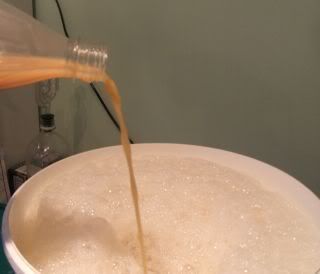disdaint
Member
Hey everyone, i'm new to the forums and to home brewing and had some questions for you all.
My first brew has been bottled for 2 weeks now and i am happy with how it is tasting at this point. I used a Brewcraft Munich Lager kit and used dextrose as the brewing sugar. Nothing fancy, But i want to progress with my brewing techniques with every new brew. So i have bought a Muntons Nut Brown Ale kit and some blended brewing sugars (Brewcraft Brewblend 20) to start my next brew. I was originally going to use unhopped spray malt but i couldn't get a hold of any at the time.
So i am making the extremely small step up from dextrose to brewing sugars and was thinking about getting a secondary fermenter aswell. What is everyones thoughts on this? What are the advantages to using a secondary fermenter?
Also, i have noticed that most people of this forum use glass carboys as secondarys. What is the advantage of glass carboys over the food grade plastic type fermenters?
If anyone has any suggestions as how to improve my technique/ingredients on this or my next brew would also be greatly appreciated.
Also, could anyone tell me what type of yeast comes with the Muntons Nut Brown Ale kit? Should i buy a nicer yeast?
Cheers!
My first brew has been bottled for 2 weeks now and i am happy with how it is tasting at this point. I used a Brewcraft Munich Lager kit and used dextrose as the brewing sugar. Nothing fancy, But i want to progress with my brewing techniques with every new brew. So i have bought a Muntons Nut Brown Ale kit and some blended brewing sugars (Brewcraft Brewblend 20) to start my next brew. I was originally going to use unhopped spray malt but i couldn't get a hold of any at the time.
So i am making the extremely small step up from dextrose to brewing sugars and was thinking about getting a secondary fermenter aswell. What is everyones thoughts on this? What are the advantages to using a secondary fermenter?
Also, i have noticed that most people of this forum use glass carboys as secondarys. What is the advantage of glass carboys over the food grade plastic type fermenters?
If anyone has any suggestions as how to improve my technique/ingredients on this or my next brew would also be greatly appreciated.
Also, could anyone tell me what type of yeast comes with the Muntons Nut Brown Ale kit? Should i buy a nicer yeast?
Cheers!




